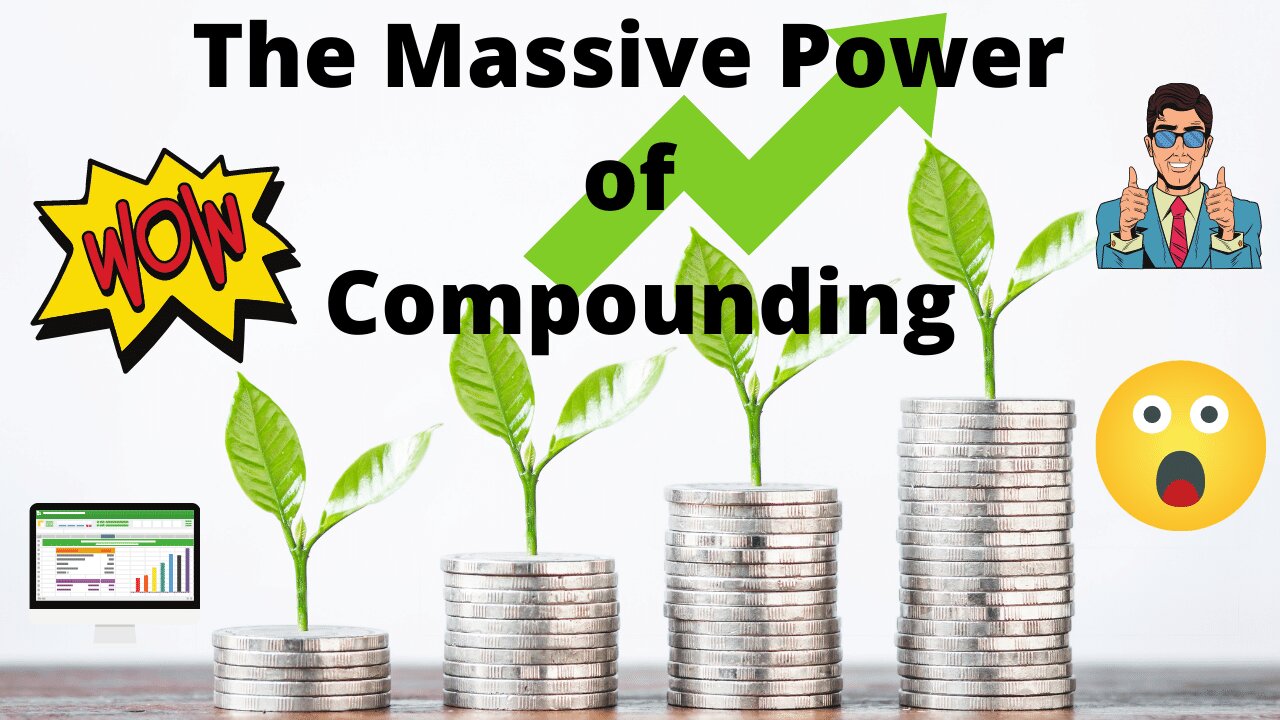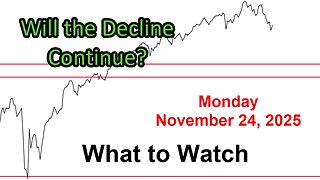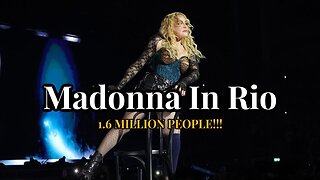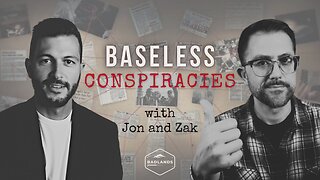Premium Only Content

Using The Magic of Compounding
My Exclusive Free Workshop The Four P's of Building a Successful Investing Program → https://spxinvesting.mailchimpsites.com
Blog: https://spxinvestingblog.com
Facebook Public Group: https://www.facebook.com/groups/433843641082343
The Magic of Compounding
Taking advantage of compounding can be very powerful.
Albert Einstein is credited with making the following quote:
“Compound interest is the eighth wonder of the world. He who understands it, earns it ... he who doesn't ... pays it.”
Compounding Definition
Compounding involves reinvesting profits.
Profits can be:
Interest
Dividends
Capital gains
Rather than keeping this money, it is reinvested.
Over time, this can make small profits turn into very large overall returns.
Theoretical Compounding
This is theoretical and not realistic.
The key to compounding depends on a number of variables:
The amount invested
The rate of return
How often a value is compounded
Example:
$1,000 is invested and earns a 20% return in one year, the value would grow to $1,200.
The $200 earned is reinvested in year two.
In year two, if another 20% return is achieved, the value would grow to $1,440.
This can be repeated.
The greater the amount, the greater the rate of return and the greater the number of compounding periods, the faster the final amount will grow.
Theoretical Compounding Examples
As stated earlier, if $1,000 is invested for one year and earns a 20% return, the value would grow to $1,200.
If the original amount is compounded on a quarterly basis, or four times each year, the value would grow to $2,073.60.
If the original amount is compounded on a monthly basis, or 12 times each year, the value would grow to $8,916.10.
If the original amount is compounded on a bi-weekly basis, or 26 times each year, the value would grow to $114,475.46.
If the original amount is compounded on a weekly basis, or 52 times each year, the value would grow to $13,104,630.94.
The Reality of Compounding
As can be seen, the numbers can become huge over a short period of time such as one year.
This seems too good to be true. In fact, it is.
The reality is that many things prevent the theoretical example from becoming real:
20% returns are not always realistic.
One loss can wipe out most, if not all profits.
As the amount grows, it becomes unmanageable:
Trade sizes are too large and attract too much attention.
Fear and greed are almost impossible to overcome.
Positions require using “round values”.
For example, it may not possible to invest $1,234.68. Amounts must “fit” the position amount and size in order to use lots and standardized option contracts.
A More Realistic Approach
A plan should be developed that includes proper money management.
One example may be:
Instead of compounding 52 times, use dollar amounts as plateaus of achievement.
Start with $1,000. If it grows to $10,000, take out $9,000 and place this amount in other, less risky, trades or investments.
Repeat the process by starting with $1,000.
The gains will not be as great but still very good.
-
 48:49
48:49
The SPX Investing Program
1 day agoWhat to Watch Update for Monday November 24, 2025
26 -
 1:12:29
1:12:29
PandaSub2000
1 day agoSonic Galactic | GAME ON...ly! (Edited Replay)
2183 -
 19:15
19:15
Nikko Ortiz
1 day agoOstrich Gets A Taste For Human Blood
72.2K17 -
 24:26
24:26
GritsGG
9 hours agoGiga-Big Duo Game w/ Mr. Poff! Most Winning Duo EVER!
46 -
 21:54
21:54
The Pascal Show
8 hours ago $0.05 earned$1.5 MILLION HIT?! Candace Owens Drops More Shocking Info On Her France Hit Plot THIS IS INSANE!
901 -
 LIVE
LIVE
Lofi Girl
3 years agolofi hip hop radio 📚 - beats to relax/study to
625 watching -
 1:29:13
1:29:13
ThisIsDeLaCruz
8 hours agoRunning Sound for 1.6 MILLION PEOPLE!!! Madonna In Rio
301 -
 2:18:52
2:18:52
FreshandFit
12 hours agoBlack Girl Gets Triggered After We Said THIS....
174K33 -
 1:46:40
1:46:40
Badlands Media
13 hours agoBaseless Conspiracies Ep. 160: The Kosovo Organ Harvesting Cover-Up
68.5K17 -
 2:04:16
2:04:16
Inverted World Live
9 hours agoTwo Texas Men Plotted to Invade Haiti | Ep. 146
64.3K7